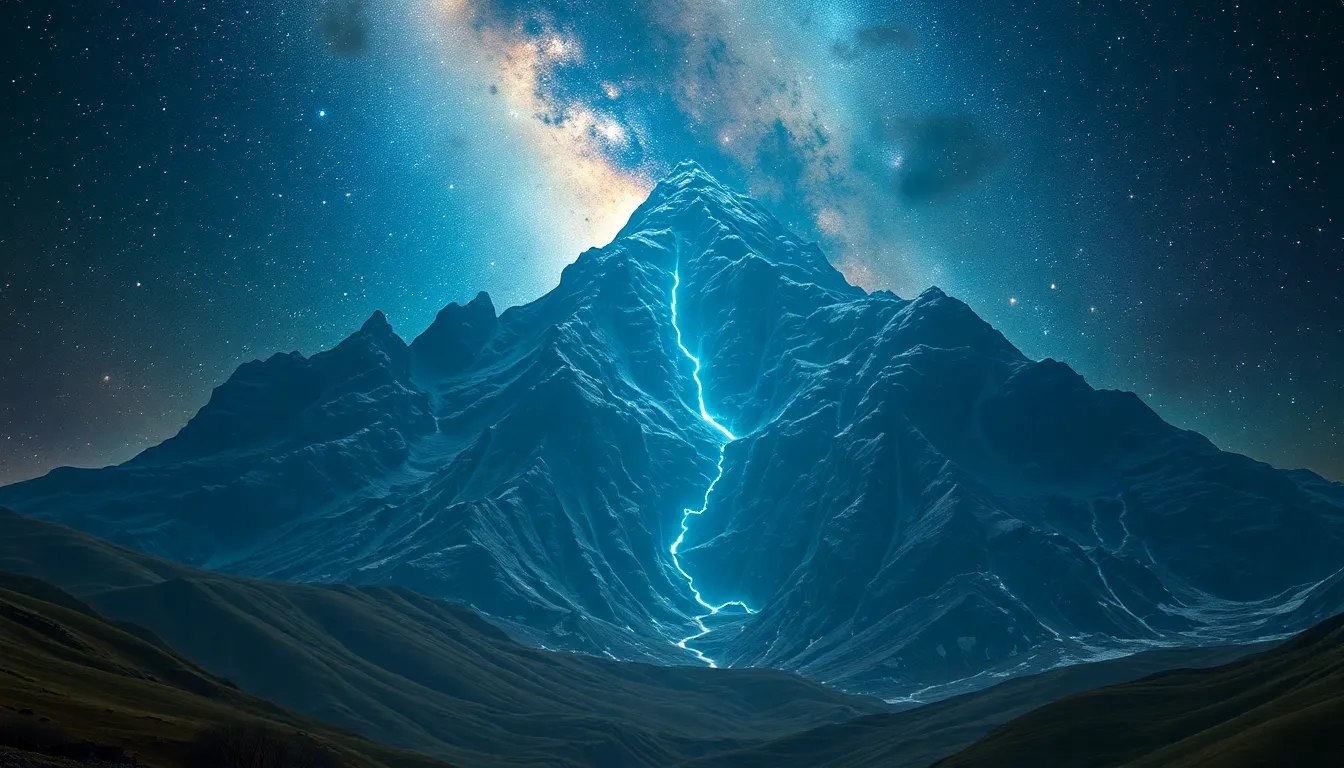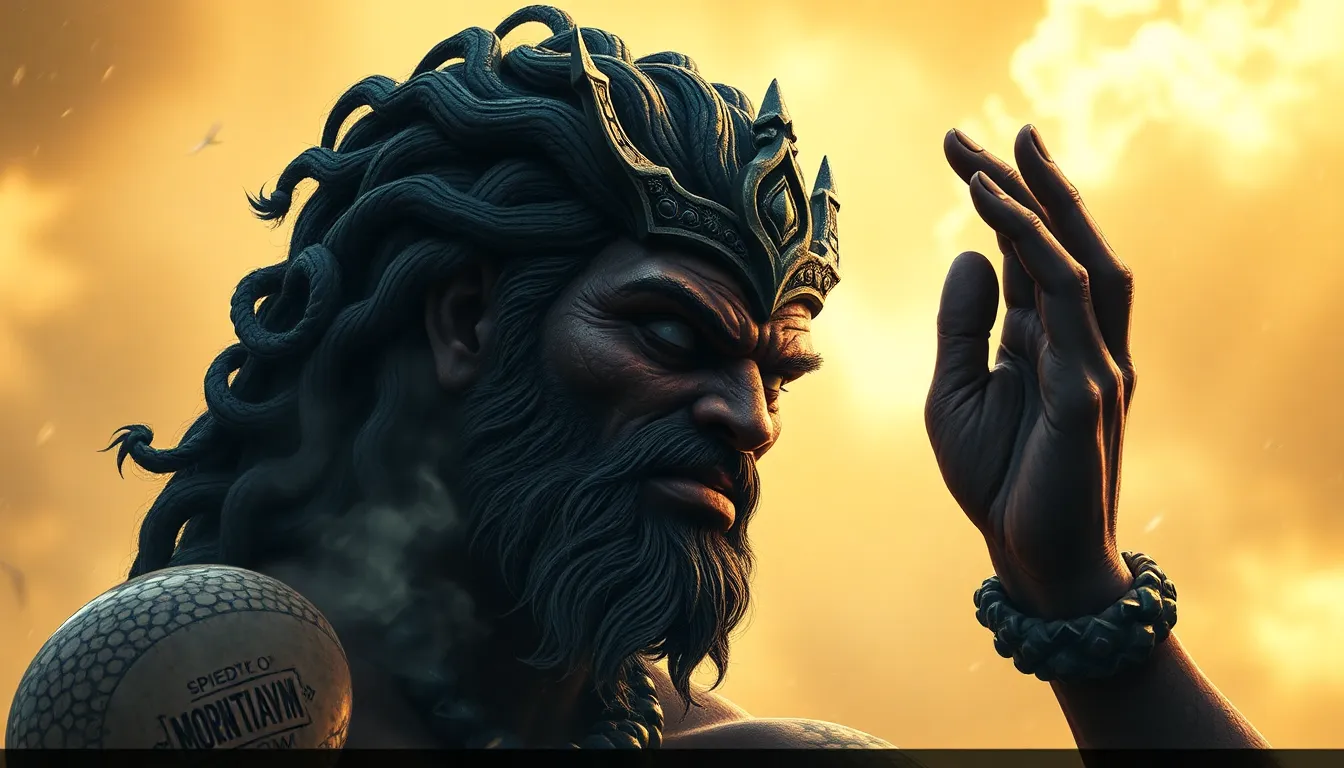The Mountain of the Night Sky: Myths of Celestial Wonders
Introduction to Celestial Myths
Celestial myths are narratives that revolve around the heavens and the celestial bodies within them. These stories often serve as explanations for natural phenomena, embodying the beliefs and values of various cultures throughout history. They connect humanity to the cosmos, acting as a bridge between the earthly and the divine. Celestial myths provide insights into how our ancestors understood their world, offering a sense of wonder and a quest for knowledge about the universe beyond our immediate surroundings.
The Mountain of the Night Sky: A Symbolic Overview
The metaphor of the “Mountain of the Night Sky” encapsulates the grandeur and mystery of the cosmos. Mountains have long been symbols of stability, permanence, and the divine. In many cultures, they are seen as sacred places where the earth meets the heavens. This connection is particularly profound at night, when the sky is filled with stars, and the mountain appears to touch the celestial realm. The night sky, with its vast expanse, invites us to ponder our place in the universe and inspires awe and reverence.
Culturally, mountains are often depicted as:
- Homes of the gods
- Places of spiritual enlightenment
- Sites of significant celestial events
This imagery enriches our understanding of the night sky, reinforcing the idea that the cosmos is not just a backdrop to our lives but a central character in the human story.
Mythological Figures Associated with the Night Sky
Throughout history, many cultures have personified the night sky through deities and mythological figures. These beings are often connected to celestial phenomena, representing creation, destruction, and the cyclical nature of life. Some notable figures include:
- Nyx (Greek Mythology) – The goddess of night, representing the beauty and depth of darkness.
- Chandra (Hindu Mythology) – The moon god, symbolizing time and the passage of life.
- Tezcatlipoca (Aztec Mythology) – The god of the night sky and the origin of all things.
These figures often play pivotal roles in stories of creation and destruction, highlighting the dual nature of celestial forces as both nurturing and fierce.
Constellations and Their Legends
Constellations have served as the foundation for navigation and storytelling for millennia. Each group of stars tells a story, often rooted in the mythology of the culture that named them. Some prominent constellations and their associated myths include:
- Orion – The hunter in Greek mythology, often depicted battling the beast Taurus.
- Ursa Major – The Great Bear, with various interpretations including the tale of Callisto in Greek lore.
- Scorpius – Associated with the myth of Orion’s demise, where the scorpion was sent to kill him.
Constellations not only helped ancient civilizations navigate but also served as a canvas for storytelling, preserving cultural histories across generations.
The Moon: A Central Figure in Celestial Myths
The moon has held a significant place in mythologies worldwide. Its phases have inspired various interpretations and symbolism in folklore, often representing the cyclical nature of life, femininity, and fertility. In many cultures:
- The waxing moon symbolizes growth and potential.
- The full moon represents fulfillment and abundance.
- The waning moon signifies introspection and letting go.
From the lunar goddesses of ancient cultures to modern beliefs about the moon’s influence on human behavior, the moon remains a powerful symbol of mystery and connection to the cosmos.
The Stars: Guides and Guardians in Mythology
Stars have been viewed as guides and protectors throughout history. Many cultures believed that stars were souls of ancestors or divine beings watching over humanity. Notable myths include:
- The Seven Sisters (Pleiades) – In various cultures, these stars are seen as sisters who guide travelers and symbolize connection.
- Arcturus – Known as the guardian star, it was believed to lead sailors safely home.
Such myths highlight the stars’ roles not just as celestial objects, but as integral parts of human life and survival.
Celestial Events: Eclipses, Comets, and Their Folklore
Celestial events such as eclipses and comets have sparked awe and fear throughout history. These occurrences were often interpreted as omens or messages from the gods. For example:
- Eclipses – Often seen as signs of impending doom or significant change. Many cultures believed they were caused by celestial battles.
- Comets – Frequently viewed as harbingers of disaster or change, comets were seen as messengers from the gods.
The reactions to these events illustrate humanity’s deep connection with the cosmos and the enduring impact of celestial phenomena on our collective psyche.
The Role of the Night Sky in Ancient Civilizations
Ancient civilizations like the Egyptians, Mayans, and Greeks meticulously studied the night sky, integrating it into their cultures.
- Egyptians – Used the stars to align their pyramids and developed a calendar based on celestial events.
- Mayans – Created detailed astronomical charts and built observatories to track celestial movements.
- Greeks – Developed constellations and myths that influenced Western astronomy.
Their understanding of the night sky had practical implications, affecting agriculture, religious practices, and daily life.
Modern Interpretations and the Legacy of Celestial Myths
Today, celestial myths continue to inspire art, literature, and science. Contemporary society often draws from ancient narratives to explore themes of connection and wonder. The influence of these myths can be seen in:
- Literature that revisits ancient stories.
- Artistic expressions that depict celestial themes.
- Scientific endeavors that seek to understand the universe, often echoing ancient inquiries.
The legacy of celestial myths serves as a reminder of humanity’s enduring fascination with the cosmos.
Conclusion: The Enduring Power of the Night Sky
The night sky, with its myriad stars and celestial phenomena, continues to captivate and inspire. The myths surrounding these celestial bodies offer a glimpse into our shared human experience, reflecting our hopes, fears, and dreams. As we look up at the night sky, we are reminded of our connection to the universe and the stories that have been told for centuries. Let us celebrate the wonders of the night sky and explore the myths that enrich our understanding of the cosmos.



